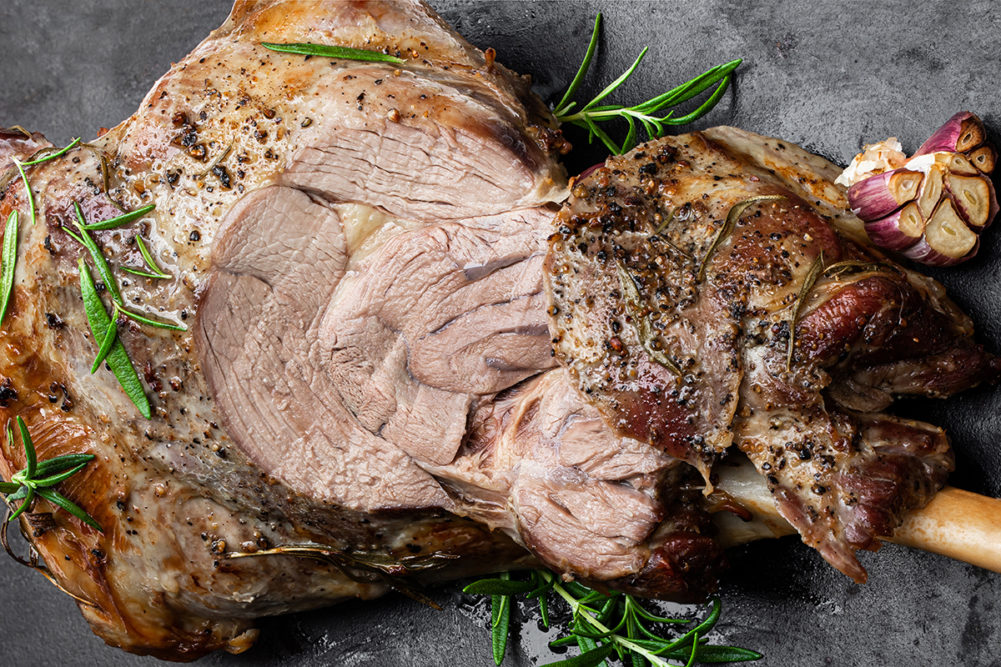KANSAS CITY, MO. – Increasingly, Americans are looking for ways to diversify their home cooking repertoires. Protein is at the center of that decision-making process, and lamb is one of the proteins that more and more adventurous consumers are turning to.
Lamb exports to the United States from Australia, by far the biggest lamb exporter to the United States, have grown by 13% over 2021, despite severe logistics and labor challenges impacting the supply chain, said Doug McNicholl, regional manager – North America for Meat & Livestock Australia (MLA).
Homebound cooks during the pandemic deserve much of the credit.
“Lamb’s popularity increased during the COVID-19 lockdown period as consumers experimented with different proteins to break the monotony of lockdowns,” McNicholl said. “This created the opportunity for lamb suppliers to retain consumers interest beyond the initial trial period.”
Taking a longer-term view, McNicholl added that lamb is popular among ethnically diverse and affluent consumers, a population expected to reach 50-60 million in the United States by 2030. And because there’s a very limited supply of domestically grown lamb, imports play a huge role in meeting demand.
From January to May 2022, Australia shipped 35,000 tons of sheep meat to the United States, 87% of which was lamb. Lamb represents a disproportionately lucrative market for Australian shippers. Despite making up just 19% of exports by volume, US exports accounted for 28% of total value.
Australia accounted for 77% of market share of mutton, goat and lamb imports to the United States from January through April.
Between the second quarter of 2021 and the second quarter of 2022, dollar sales of lamb increased 15.7% and volume sales increased 9.3%.
Peak consumption occurs during Easter and Christmas, but MLA is making it a priority to grow consumption outside of these peak times. Fortunately, the industry has several trends working in its favor to help meet that goal.
“Once more niche, lamb has become a mainstream protein, driven by a growing consumer desire for health and wellness, exploration, and the growing popularity of ethnic cuisine,” McNicholl said. “Australian lamb is lean and mild tasting, inspiring people to cook in new and exciting ways that elevate any occasion.”
The Australian industry has seen an uptick in demand for lamb burgers, nachos, and tacos as well as the traditional holiday preparations.
Beyond that, McNicholl added, the importance of variety in the wake of COVID-19 can’t be understated. Forty-two percent of consumers report buying different types of protein, which provides a good opportunity for lamb to be on more and more American dining tables.
As tastes and the need for greater variety continue to evolve, Australian lamb is poised to meet the demand for quality, flavor and consistency, with an extensive range of cuts and product lines, all raised and processed to some of the strictest standards on earth, McNicholl said.
“It’s free-range and naturally fed on our abundant grasslands, so it's mild tasting and naturally lean and tender — a pure product of its pure environment.”
Shoppers are attracted to the quality, naturalness, and health attributes of lamb. But, as with most foods, it all comes back to taste.
Merchandising: Best practices
The keys to merchandising lamb at retail, McNicholl said, is to make sure it’s easy to find and easy to cook.
“Ensuring high visibility is important, as is calling out the health and wellness attributes of lamb — an area where Australian lamb suppliers can help.”
Highlighting recipes instore can help drive familiarity and shopper confidence in purchase. And seasonal marketing is always a good play for grocers to refresh their product mix and stay relevant with shoppers.
Even during inflationary times, premium products like lamb have their place, McNicholl said.
“People are bargain hunting, but they’re still occasionally buying premium products as affordable splurges. Lamb can play a big role for grocers here by offering up variety and specialness that other proteins can’t.”
Highlighting Australian lamb in store to help “elevate the everyday,” he said, has been a proven winner when marketing the meat case.
In addition to funding and marketing its generic category brand for all Australian suppliers, True Aussie, MLA co-invests with commercial brand owners to scale and inform their efforts in-market, McNicholl said.
With True Aussie Lamb, the organization offers a range of services, including category brand marketing, developing educated ambassadors of Aussie Lamb among food industry professionals and other influential professions, targeted key account management and supply chain activities including trade shows, point of-sale and instore promotions, menu promotions and joint marketing activities with brand owners.
“We also collect and report marketing insights to Australian producers through our website, e-news, and forums so they have the latest information to make the best possible marketing decisions.”
One example of those insights: MLA’s Voice of the Shopper Research found that the shopping journey for most proteins starts before the consumer ever enters the store. More than 80% of shoppers use shopping lists and almost half of those are digital. As a result, MLA works with Australian lamb suppliers and their retail partners to get lamb on shopping lists early using shoppable recipes and embedding Aussie lamb into digital shopping list app networks.
Caring for animals, the environment and people every day is central to the Australian lamb industry’s mission and marketing messaging.
“Because so much of our livestock are raised on natural grasslands, care for the land is critical to our success around the globe,” McNicholl said. “That care extends from the paddock to the plate, in how generations of producers seek to continuously improve and lessen their impact on the planet.”
The Australian red meat industry has set a target to be carbon neutral by 2030, and the beef and sheep industries have established world-leading sustainability frameworks to guide their sustainable development, he added.
To date, the Australian red meat industry has decreased annual net greenhouse emissions by 57% since 2005. In 2020, Australian lamb was climate neutral, meaning the industry didn’t contribute to additional global temperature rise.


